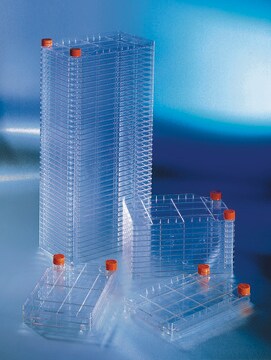ECM541
ECM Cell Culture Optimization Array (Colorimetric, 96-Wells)
About This Item
Produits recommandés
Technique(s)
cell based assay: suitable
Niveau de qualité
Entrée
sample type: human embryonic stem cell(s)
sample type epithelial cells
sample type mesenchymal stem cell(s)
sample type pancreatic stem cell(s)
sample type neural stem cell(s)
sample type: mouse embryonic stem cell(s)
sample type induced pluripotent stem cell(s)
sample type hematopoietic stem cell(s)
Méthode de détection
colorimetric
Description générale
How does the ECM Cell Culture Optimization Array work?
The foundation of our kit is a 96-well microtiter plate containing several commonly-used ECM proteins. Collagen I, laminin, fibronectin, and vitronectin are arrayed in triplicate with concentrations ranging from 0.125 μg/mL to 20 μg/mL. You simply culture your cells on the plate, and use the included reagents to block, stain, and analyze the adhesion capacity with a plate reader. We have extensively tested and optimized this kit on a variety of cell types including HEK293 cells, and human and rodent neural stem cells.
Application
Cell Structure
Conditionnement
Composants
- ECM Gradient Array Plate: One 96-well plate with 12 strips
- 30%BSA: (Part No. CS201638) One vial - 0.5mL
- Cell Stain Solution: (Part No. 90144) One bottle - 20 mL.
- Extraction Buffer: (Part No. 90145) One bottle - 20 mL
- Assay Buffer: (Part No. 2003646) One bottle - 100 mL
Stockage et stabilité
Informations légales
Clause de non-responsabilité
Mention d'avertissement
Danger
Mentions de danger
Conseils de prudence
Classification des risques
Eye Irrit. 2 - Flam. Liq. 2
Code de la classe de stockage
3 - Flammable liquids
Certificats d'analyse (COA)
Recherchez un Certificats d'analyse (COA) en saisissant le numéro de lot du produit. Les numéros de lot figurent sur l'étiquette du produit après les mots "Lot" ou "Batch".
Déjà en possession de ce produit ?
Retrouvez la documentation relative aux produits que vous avez récemment achetés dans la Bibliothèque de documents.
Notre équipe de scientifiques dispose d'une expérience dans tous les secteurs de la recherche, notamment en sciences de la vie, science des matériaux, synthèse chimique, chromatographie, analyse et dans de nombreux autres domaines..
Contacter notre Service technique









